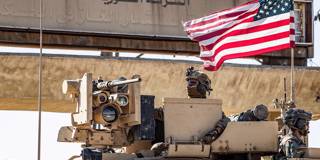The Trump administration is learning that pulling back from the Middle East is neither easy nor without risks and costs. What is needed is clear: greater US readiness to use limited military force, if necessary, and a willingness to pair sanctions with diplomacy.
NEW YORK – It was August 5, 1990, just days after Saddam Hussein’s Iraq had invaded and conquered all of Kuwait, and US President George H.W. Bush could not have been clearer as he spoke from the South Lawn at the White House: “This will not stand, this aggression against Kuwait.” Over the next six months, Bush proved to be a man of his word, as the United States sent a half-million soldiers to the Middle East and led an international coalition that liberated Kuwait.
Three decades later, a very different American president embraced a very different US policy. In the wake of abandoning its Kurdish partners in Syria who had fought valiantly in defeating Islamic State (ISIS) terrorists, the US stood by as Iranian drones and missiles attacked Saudi Arabian oil installations, temporarily taking half of its capacity offline.
Welcome to the post-American Middle East. To be fair, the phrase is something of an exaggeration, as the US has not withdrawn from the region. In fact, it has recently sent additional troops to deter and, if necessary, help defend Saudi Arabia from future Iranian attacks and possibly respond directly to them. But there is no getting around the fundamental truth that the US has reduced both its presence and role in a region that it has dominated for nearly a half-century.

NEW YORK – It was August 5, 1990, just days after Saddam Hussein’s Iraq had invaded and conquered all of Kuwait, and US President George H.W. Bush could not have been clearer as he spoke from the South Lawn at the White House: “This will not stand, this aggression against Kuwait.” Over the next six months, Bush proved to be a man of his word, as the United States sent a half-million soldiers to the Middle East and led an international coalition that liberated Kuwait.
Three decades later, a very different American president embraced a very different US policy. In the wake of abandoning its Kurdish partners in Syria who had fought valiantly in defeating Islamic State (ISIS) terrorists, the US stood by as Iranian drones and missiles attacked Saudi Arabian oil installations, temporarily taking half of its capacity offline.
Welcome to the post-American Middle East. To be fair, the phrase is something of an exaggeration, as the US has not withdrawn from the region. In fact, it has recently sent additional troops to deter and, if necessary, help defend Saudi Arabia from future Iranian attacks and possibly respond directly to them. But there is no getting around the fundamental truth that the US has reduced both its presence and role in a region that it has dominated for nearly a half-century.